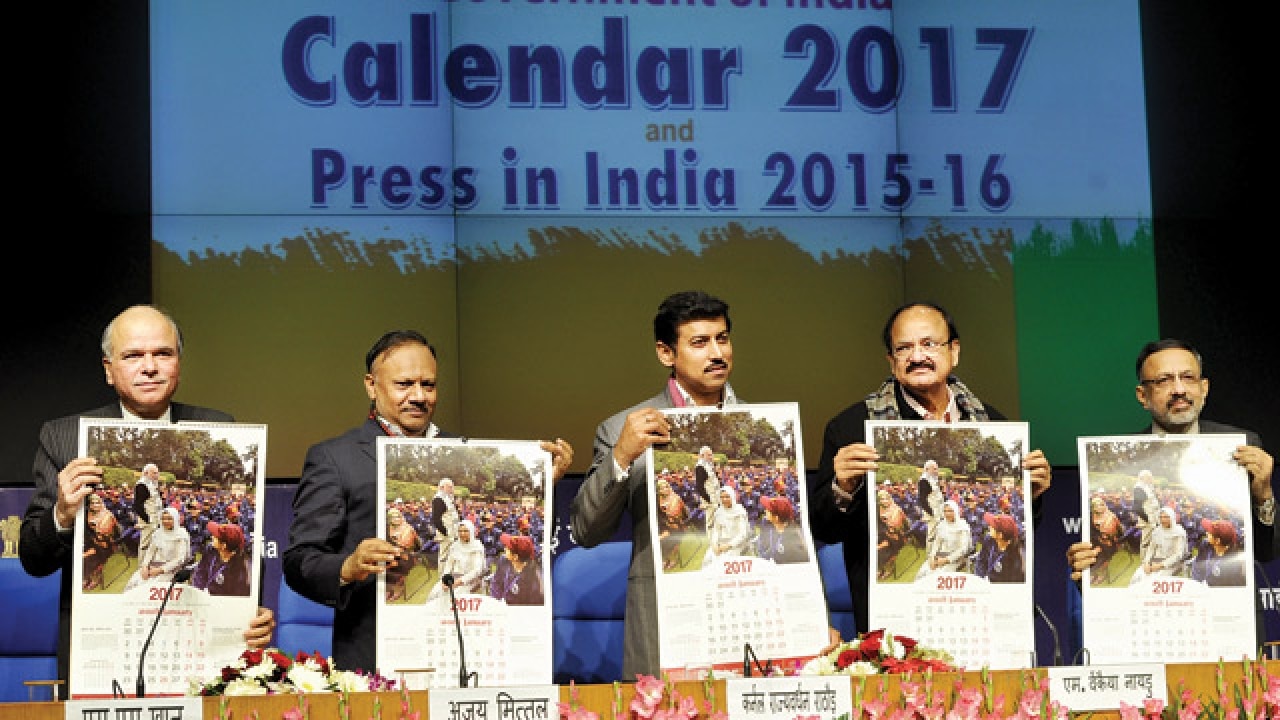
The Saka Era calendar is the official National Calendar of the country. Notice the words ‘National Calendar’. What does it mean? Around 1950, there were more than 30 different calendars used in the country. This was because of our great cultural and religious diversity. Different regions followed different customs/practices in calendar computations. Even today, one can notice the variance in regional New Year celebrations across the country (varying from March to mid-April to even post Diwali in October/November for a few regions). Hence, with such diverse calendar practices, it was necessary to have uniformity and avoid confusion in fixing official holidays, dates of religious festivals and for other normal civil and administrative purposes. That’s why the government desired to adopt one calendar for the country. This was to be the National Calendar. This was meant to be used with (and not to replace) the Gregorian calendar, the global standard, and which was being used in India since the 1750s. That said, it is fascinating to note how the Saka calendar got chosen as the National Calendar.
In 1952, a Calendar Reforms Committee was set up under the Council of Scientific and Industrial Research (CSIR). This was chaired by the famous scientist and physicist Prof Meghnad Saha. It included a few eminent academicians and technical experts as well. The scope: “To examine all the existing calendars which are being followed in the country at present, and after a scientific study of the subject, submit proposals for an accurate and uniform calendar for the whole of India”.
This committee did a detailed review of various Indian calendars and submitted its report three years later in 1955. The committee recommended the Saka Era calendar as the unified National Calendar, which the government formally accepted. The proposed New Year was to begin at 1 Chaitra 1878. This corresponded to March 21, 1956 ACE. In this regard, note the following:
* Why the Saka calendar? In support of its choice, the committee said, “We have recommended the Saka calendar as this is the era par excellence used by all Indian astronomers, and had been used, and is still used, for calendaric calculations all over India, since the days of the Ujjain astronomers (first century ACE)”.
* Why March 21 as the New Year Day? Standard astronomical compilation — Surya Siddhanta (dated around 4th century ACE) was followed to compute the length of a year. As per Surya Siddhanta, a New Year begins on the day after Vernal Equinox (i.e., the day when the sun shines on the Equator in the northern hemisphere). Since Vernal Equinox corresponds to March 20, the New Year corresponded to the day after i.e., March 21.
* How does 1956 ACE correspond to the Saka Era year 1878? The Saka Era is believed to have been founded by King Shalivahana of the Satavahana dynasty. Its zero year corresponds to the year when the King was crowned. This is believed to be 78 ACE. Hence, one needs to subtract 78 years from ACE while computing the corresponding year for the Saka Era. Subtracting 78 years from 1956 meant the year 1878 Saka Era.
* The committee retained Indian names of various months with Chaitra as the first month. It further fixed the number of days in each month. The first six months of the year had 31 days each (except Chaitra, which had 31 days in a leap year), while the last six months had 30 each.
Besides constructing a unified calendar, the committee went into great depths of ancient Vedic principles and astronomy texts and recommended uniform standards for fixing religious events which were tithi based. This becomes important because of a mismatch between a Lunar calendar and a Solar calendar, with tithi based on the Lunar Day. This was to ensure a uniform day and time for celebrating festivals across different regions in the country. The committee showed that the Indian way of computation was more scientific and accurate than the Gregorian calendar. Interestingly, around the time the above committee was deliberating on this subject, the
United Nations had a proposal for adopting a new World Calendar. But for various reasons, this proposal never reached any consensus.
The authors are economists with Niti Aayog. They tweet
@bibekdebroy and @kishore1810. Views are personal.